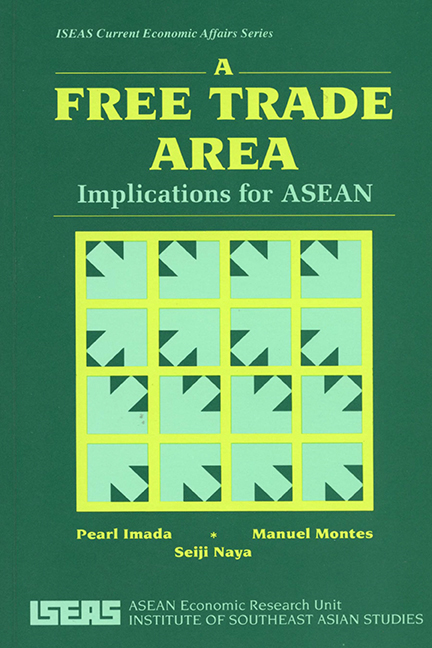Book contents
3 - A Partial Equilibrium Analysis of Intra-ASEAN Trade
Published online by Cambridge University Press: 21 October 2015
Summary
Methodology
A revised version of the Armington (1969 and 1970) approach developed by Tyers (Uehara and Tyers 1980, Lin 1986) is used here because of its ability to isolate income growth effects and to account for supply-side effects without prohibitive data requirements. In the case of ASEAN integration, this approach is advantageous because it goes beyond the estimation of trade creation and trade diversion and provides estimates of growth of exports, imports, consumption, and production. More importantly, the analysis can be done on a disaggregated industrial level which allows some analysis of changes in the structure of production in the region. It should be noted that under the Armington assumption, a country will simultaneously export, import, and produce a good for domestic consumption because the same good produced in a different country is considered to be an imperfect substitute — that is, textiles produced in the Philippines are not perfect substitutes for textiles produced in Thailand. Substitution and price elasticities as well as the extent of the tariff change will determine the change in the proportion of imports to total consumption (which is equal to total production less exports plus imports). Exports are determined by imports from partners and total production is the sum of exports plus production for domestic consumption. The model is basically demand-driven but, unlike most models of this type, supply is not perfectly elastic. Production increases are constrained by supply elasticities.
In the model, there are six countries (Indonesia, Malaysia, the Philippines, Singapore, Thailand, and the rest of the world) which are simultaneously producers, importers, and exporters of each commodity. The study looks at all manufactured goods with the exception of petroleum, or a total of 25 goods at the three-digit ISIC level. These goods comprise approximately 60 per cent of total ASEAN trade. The data represent the average for 1983 and 1984 imports and production. Price and supply elasticity estimates were imputed while substitution elasticities were assumed to be 2.0 for trade among the ASEAN countries and 0.5 for trade with the rest of the world.
- Type
- Chapter
- Information
- A Free Trade AreaImplications for ASEAN, pp. 16 - 23Publisher: ISEAS–Yusof Ishak InstitutePrint publication year: 1991



